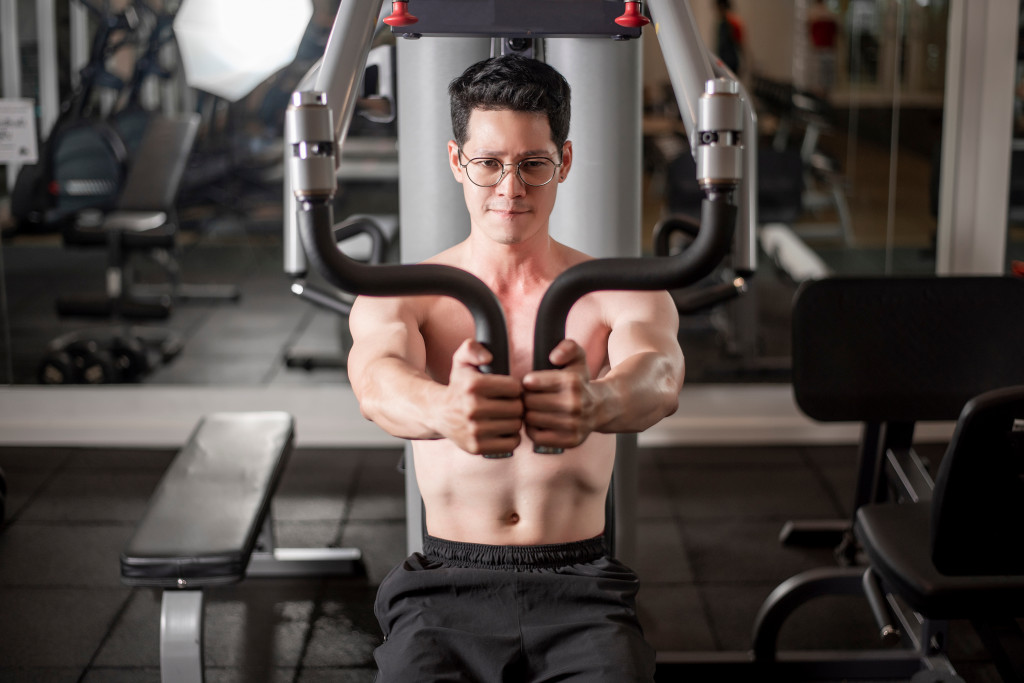The world of fitness is filled with many common misconceptions and myths, often perpetuated by those who don’t know any better. Physical fitness is a science (it’s ultimately biology), and as such, has scientific reasons for things working or not working. Below are the most popular myths, and why they’re wrong.
Myth A: Stretching Before Workouts is Good for You
Many people have heard of the advice “stretch before any physical activity”. While it’s not exactly bad advice, it’s a very incomplete one. There are different types of stretching, dynamic and static being among the most important distinctions. Dynamic stretching involves moving and having the muscles go through their full range of motion (ROM).
Static stretching being the opposite, where you hold a muscle in its stretched state for a set amount of time. Before workouts, dynamic stretching is better as it prepares your muscles for the pressure they will be taking on. After workouts, however, static stretching is best as it will help the muscles relax and ease them off their contracted state.
Truth A: Static Stretching is Bad, but Dynamic Stretching is Good
Myth B: There’s an “Anabolic Window” or the Best Time to Drink Protein
Among the most popularly perpetuated myths within the ‘gym bro,’ culture is that there’s an optimum time to drink protein. That doing so will ‘maximize your gains’ and make your muscles grow significantly larger. Unfortunately, there simply isn’t any scientific support for it. The best time to drink your protein supplements or whey permeate powder is when you can. There simply isn’t an optimum time or an ‘anabolic window’ that requires you to drink at a specific period. Studies have shown that those who drank at marketed “anabolic period” or “anabolic windows” did not, in fact, gain any significant difference in their muscles as compared to those who simply drank whenever they could.
Truth B: There’s Simply No Scientific Support for It
Myth C: Exercise Can Make Up for Bad Diet

Fitness enthusiasts are known to consume a lot of food, after all, the calories they consume are then used up due to the number of strenuous activities they do. However, this also breeds the false belief that you simply need to eat as much as you can and exercise as much as you can to get good results. This is obviously very far from the truth. To gain muscles, one needs to go on a high-protein diet, coupled with vitamins and nutrients that let the body digest proteins better. No amount of exercise can make up for a bad diet, and to truly get good results, you need to properly apply both a good exercise routine and an appropriate diet plan.
Truth C: Consistent Exercise and Good Diet Go Together
Myth D: You Can Exercise the Fat Away
On the flip side of things, there’s also a commonly held belief that you can “exercise the fat away”. Many use this as an excuse to eat sugary or fatty foods, justifying that they’ll put in an unnecessary amount of exercise later in an effort to counteract this. However, to trigger weight loss, one needs to be on a calorie deficit.
A calorie deficit is a consistent state of burning more calories than you consume. It’s not just a matter of “burning the fats”, as our body is very efficient when it comes to storing fat as energy. This is why a proper diet and exercise regimen is crucial: it allows you to safely achieve a calorie deficit. Currently, this is the only scientifically proven way to lose weight, and until humans discover another method, this will remain the only one for quite some time.
Truth D: Calorie Deficit is Required to Trigger Weight Loss
Myth E: Doing Crunches Can Reduce Belly Fat
Everyone has seen those ads: ab rollers that promise an inch off your waistline. Or fitness programs that swear toned abs if you buy their program. Perhaps the most popular myth is that by simply doing thousands of ab crunches, you can reduce belly fat and bring out your abs. Adjacent to this is the belief that by doing bicep curls, you can reduce arm fat. Or doing squats will reduce thigh fats.
However, the reality is that you can’t “target” a body part for weight loss. Such a thing is called “spot reduction” and is only really possible if you went for a cosmetic treatment. As mentioned before, weight loss requires a calorie deficit, not just doing hundreds of reps of an exercise.
Truth E: There is no such thing as spot reduction




